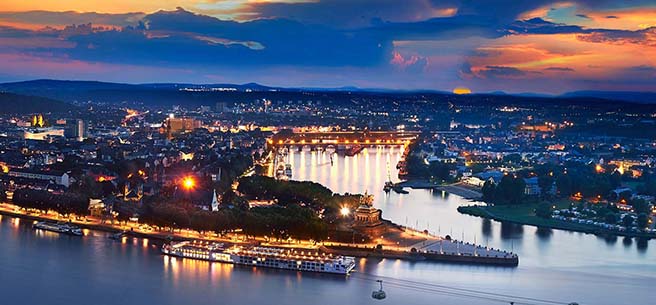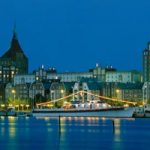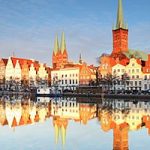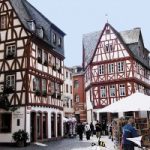
Germany’s past glows brightest in its 16 historic cities where Roman, Celtic, French, Prussian and many other influences melt together. Germany.travel has created a guide to escort you through historic settings you didn’t realize still existed.
 1. Rostock: brick-Gothic architecture with a maritime flair
1. Rostock: brick-Gothic architecture with a maritime flair
The harbour is the heart of the maritime city of Rostock. Although there may be fewer sailors on the quayside these days, the harbour still shapes the character of the city. It is also the venue for major events, such as the Hanse Sail in August, which attracts hundreds of sailing ships and a million visitors each year.
During Hanse Sail, up to 300 tall ships, sloops, cruise ships, ferries, museum schooners, vintage yachts and other sea-going vessels are paraded in front of delighted spectators in and around Rostock’s harbour. This maritime festival is a special occasion for the entire Baltic region, a celebration of friendship between nations featuring music performed on a number of stages, two fireworks displays, a medieval fair, a Ferris wheel and plenty more entertainment spread out along nearly four kilometres.
 2. Lübeck: a northern city of beauty and intellect
2. Lübeck: a northern city of beauty and intellect
Lübeck, the Queen of all the Hanseatic cities, was founded in 1143 as ‘the first western city on the Baltic coast’. Today, its appearance is still characterised by a medieval ambience and by cultural and historical attractions, such as the Holsten Gate, that hark back to Lübeck’s glorious past as a free imperial and Hanseatic city.
Over the centuries, Lübeck’s name has stood for freedom, justice and prosperity. Lübeck law was, for its time, a progressive set of land and maritime regulations and inspired the establishment of over 100 towns near to the Baltic Sea, paving the way for the Hanseatic League’s dramatic rise to become the biggest trading power of its age. Its undisputed capital was Lübeck, one of the most illustrious early seats of global trade. Surrounded by water, the old town with its seven towers and five principal churches brings to life 1,000 years of history and has been protected as a UNESCO World Heritage site since 1987.
 3. Mainz: city of Gutenberg and Germany’s wine capital
3. Mainz: city of Gutenberg and Germany’s wine capital
Mainz is famous for its university, its Roman heritage, its status as a media hub and regional capital, and its three most defining features: the Romanesque cathedral, the Gutenberg printing press and the Rhineland carnival. The people of Mainz have good reason to be proud of their city’s history spanning almost 2,000 years. This rich cultural heritage incorporates a well-established winegrowing tradition, which only adds to Mainz’s appeal.
For over 1,000 years the city’s skyline has been dominated by one building, Mainz Cathedral. Towering majestically in its central location, the cathedral is one of the most important churches in Germany. Its foundation stone was laid in 975 AD under the aegis of Bishop Willigis. In its shadows lie the medieval and early modern quarters of Mainz. The hustle and bustle centres around the twisting, narrow lanes, with names such as Nasengässchen and Heringsbrunnengasse, as well as the many small shops, boutiques and cafés surrounding pretty Kirschgarten square with its romantic timber-framed houses and Marienbrunnen fountain.
Read more on Germany.travel and comment which of these 17 cities you would like to visit in 2018!